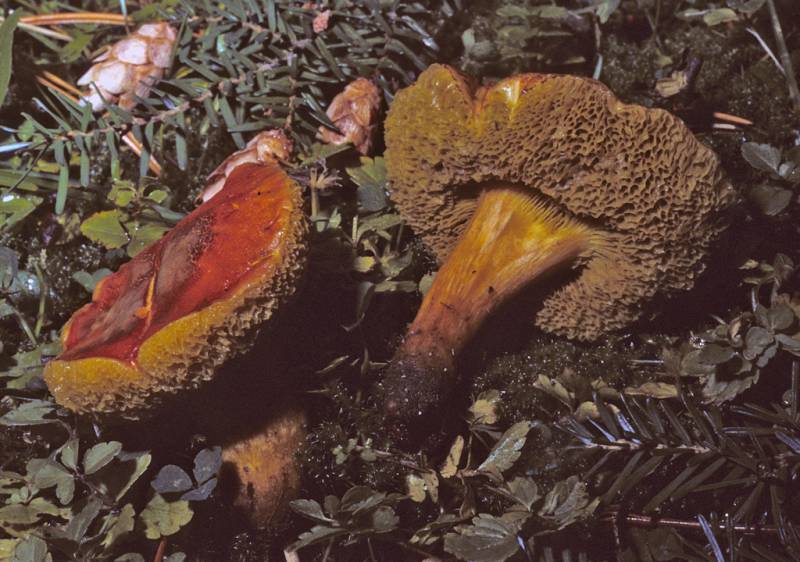Origin: Native
Conservation Status: Not of concern
Boletus rubellus is one of several small to somewhat larger species that have in common reddish, dry velvety caps that often crack in age, tubes and pores that are yellow to olive yellow, stipes that are reddish but with some yellow at the apex or elsewhere, and flesh and tubes with a slight to stronger bluing reaction when cut or bruised. They are similar to B. chrysenteron and B. truncatus but are more brightly colored. The species in this group are very difficult to tell apart, and a number of different names have been used for them. B. coccyginus, described from California, fits into this group as does B. fraternus. There is a good chance that boletes in this group have been introduced into our area. They often occur during summer. Several of our PNW collections fit B. rubellus well in occurring in a park under lindens and having bright red cap and stipe, blue staining when bruised or cut, cap cuticle composed of erect septate hyphae with tapered ends and some encrusted walls, and thick-walled spores up to 12-13 μm long.
Sources: Trudell, Steve and Joe Ammirati. Mushrooms of the Pacific Northwest. Portland, Timber Press, Inc. 2009.
PNW Herbaria: Specimen records of Boletus coccyginus in the Consortium of Pacific Northwest Herbaria database
CalPhotos: Boletus coccyginus photos



